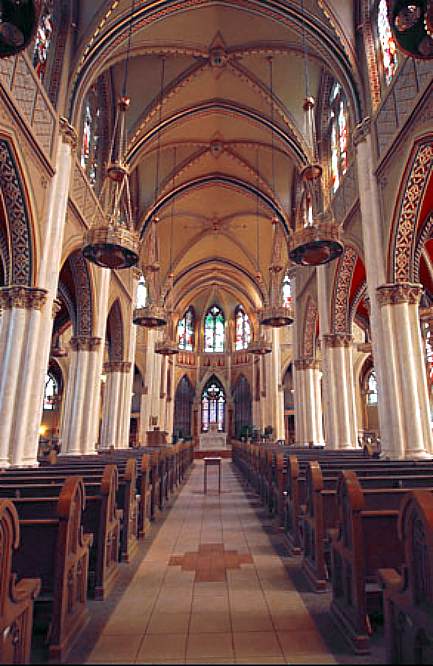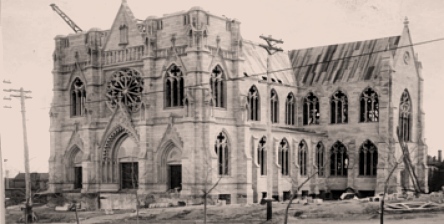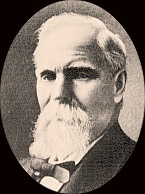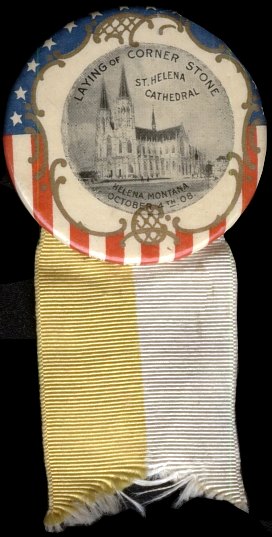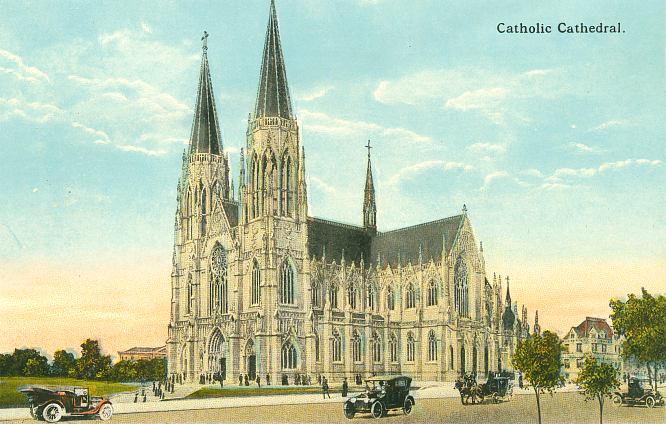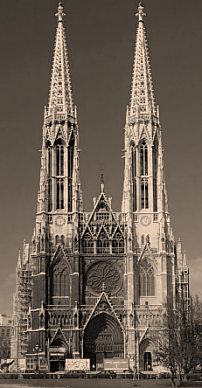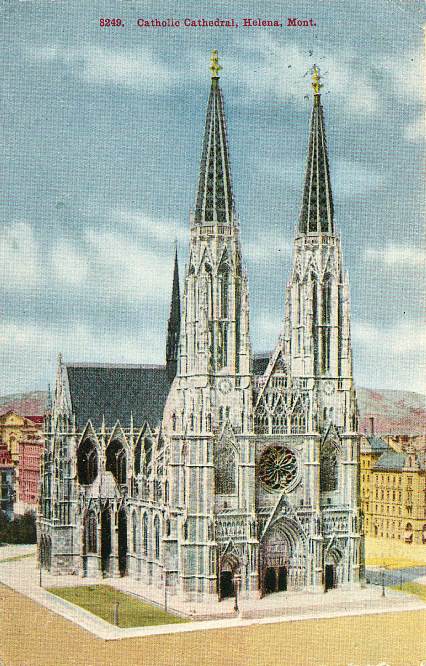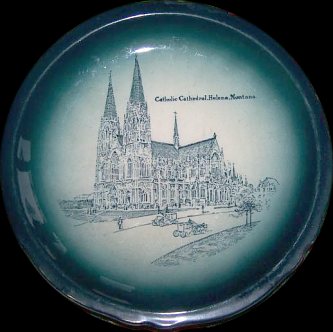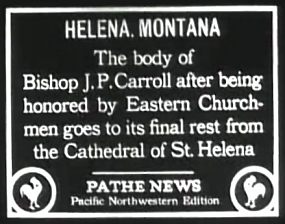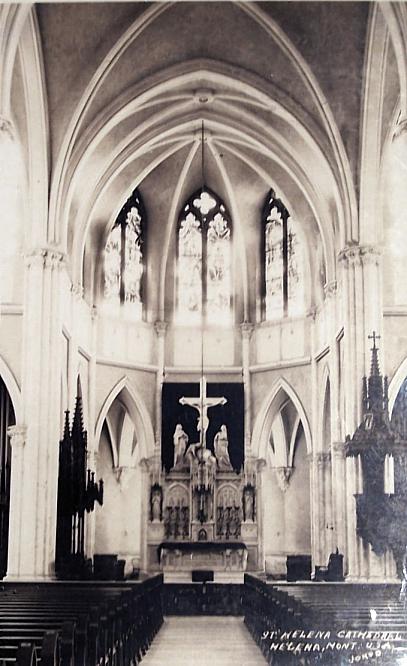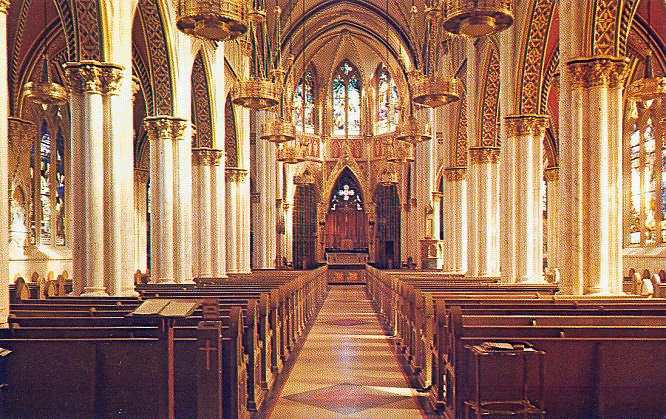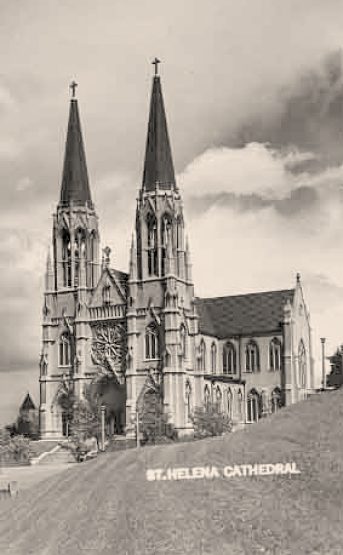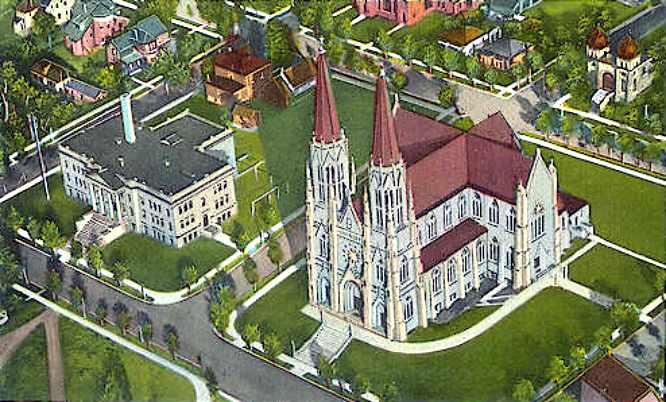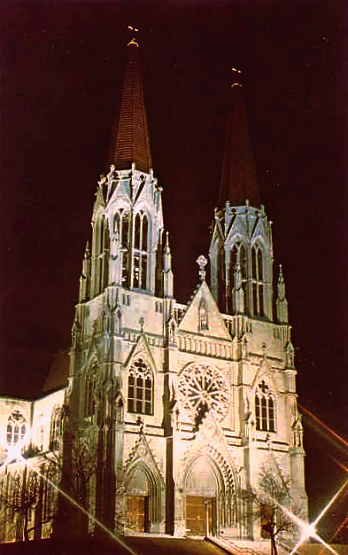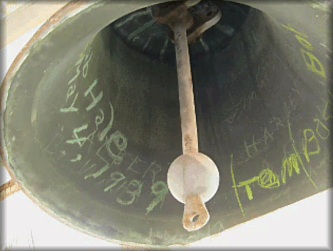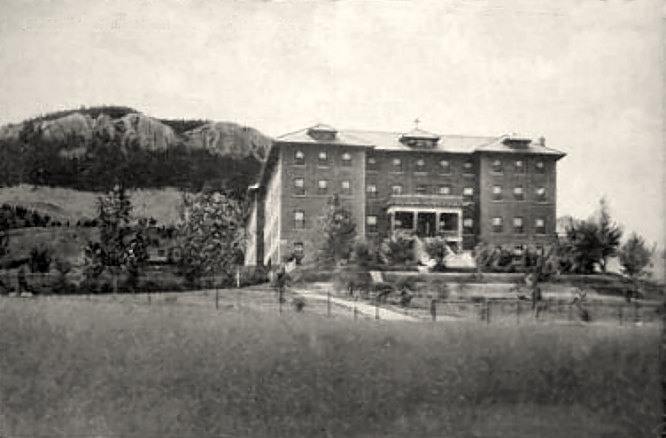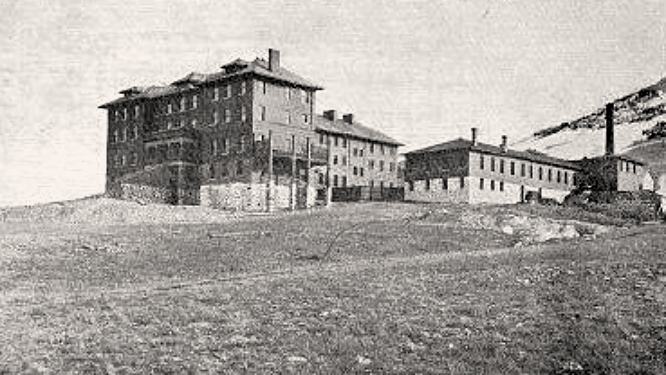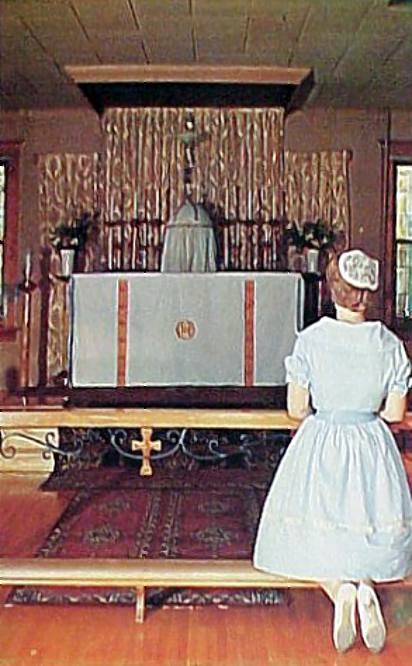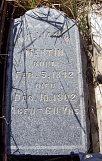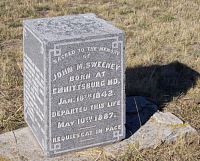ST. JOSEPH'S
ORPHANS HOME
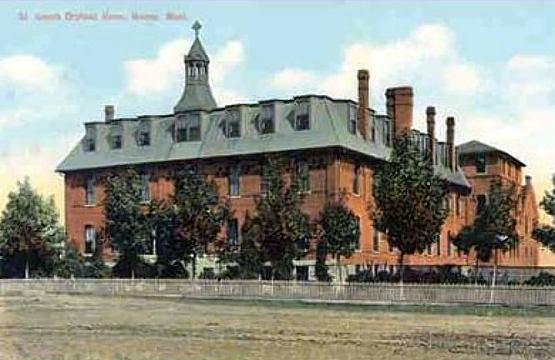
St. Joseph's
Orphans Home, which stood on the northeast corner of Montana
Ave. at Custer Ave.. The Home was built in 1892-93 by the
Sisters of Charity of Leavenworth, on land purchased by the
Sisters and built with money donated by companies, businessmen
and friends of the Sisters.
It had
steam heat, with stairs and flooring of hard maple. Naturally,
the boys department was entirely separated from that of the
girls It had a marble altar in the orphans' chapel, donated
by the Galen family as a memorial of Matilda Galen (1837-1891).
The whereabouts of the altar is unknown.
The building
was badly damaged by the 1935 earthquakes, but it continued
to operate at least into the 1950s.
THANKS
TO SISTER DOLORES BRINKEL, SCL, ARCHIVIST OF THE DIOCESE
OF HELENA
|

THE OLD CATHOLIC
CEMETERY
A
SAD TALE OF NEGLECT
|
Robinson
Park in Helena's Sixth Ward (see map below) was once the
site of the old Catholic cemetery, which served three Helena
parishes from 1868 until about 1908, when Resurrection Cemetery
was opened on N. Montana Avenue. Not all the remains were
removed to the new cemetery, and there are still many graves
beneath the grass of Robinson Park.
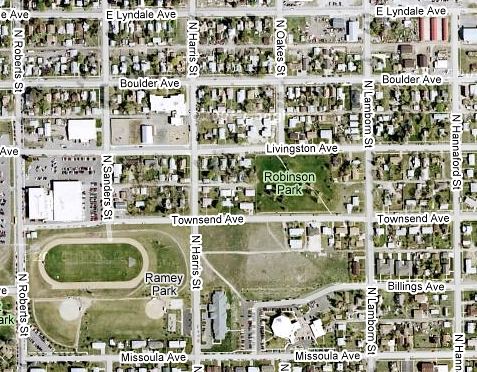
Founded
in 1868 by the Church of the Sacred Hearts of Jesus and Mary,
the cemetery eventually served St. Helena's Church (1889), and
St. Mary's (ca. 1905).
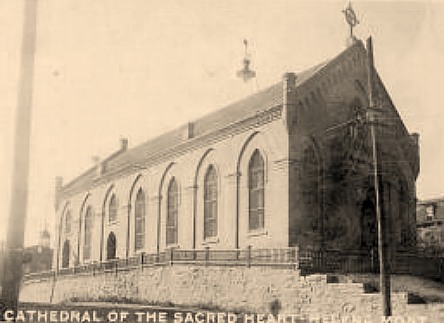
Cathedral
of the Sacred Hearts of Jesus and Mary, Warren Street.
CEMETERY
ABANDONED
When
Resurrection Cemetery opened in 1908, some remains from the
old cemetery were disinterred and reburied there, but some 1,600
individuals remained behind. Neglect of the old burial ground
took a toll over the decades, and the cemetery fell into sad
disrepair. A 1944 Independent Record story
tells of a neglected mausoleum being broken open...

Evidently
no effort was made by the Helena Diocese to remove all the remaining
bodies from the cemetery, although it is believed that whatever
mausoleums remained were pulled down sometime in the late 1940s
or early 1950s, perhaps to prevent a repeat of this sad incident.
In
the 1970s, it was decided to convert the cemetery into a "passive
park". Headstones and other monuments were pulled up and
dumped -- some in the far southeast corner of the Resurrection
Cemetery property (see photos below), and some at the old Helena
Sand and Gravel pit (now Spring Meadow Lake) west of Helena.
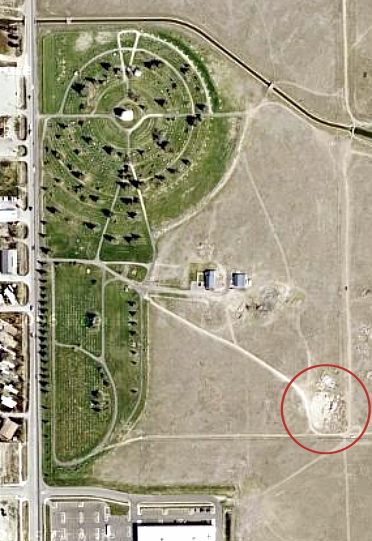
|
Circled
in this recent satellite image of Resurrection Cemetery
is the location where many stone markers from the old
Catholic cemetery were dumped. Scott Nelson of Helena
writes:
|
"
The Diocese had been allowing stone carvers and
other monument companies for the last 30 years to
come and collect the marble and granite from the
relocation project and recycle them -- as long as
they shaved the old names off.
A
man who lived on Hauser Blvd. in the late 80s got
a truck load of stones from Resurrection and built
a garden wall with them. He got complaints from
his neighbors, so stucco was applied over it. Now,
no one remembers or complains, but someone’s
memories are buried In a garden wall on the west
end of town."
|
|
|
DISCARDED HEADSTONES
HIDDEN FROM VIEW
Two 2006 photos
of the headstones on the Resurrection Cemetery property.
COURTESY OF SCOTT NELSON
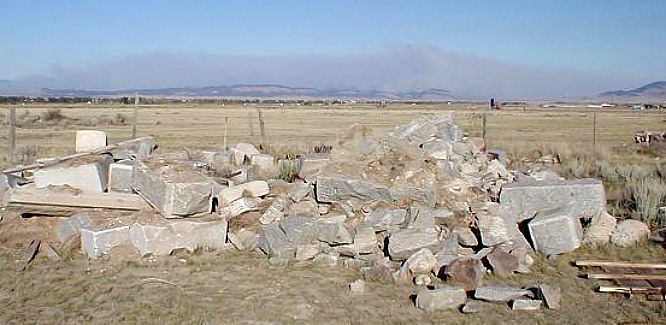
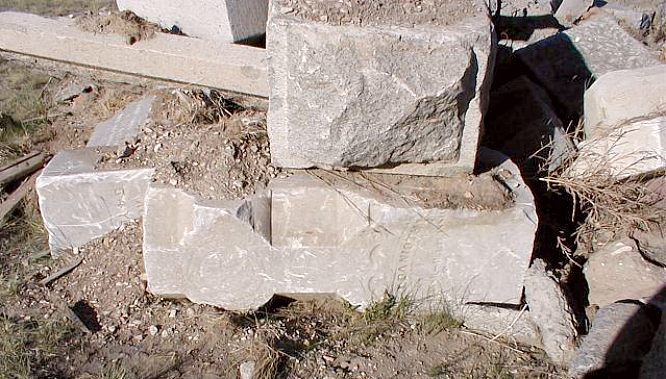

| By spring
of 2007, the jumble of discarded stones had been covered with
tons of rock and dirt, hiding them from the view of recent nearby
commercial development. COURTESY
OF CHARLEEN SPALDING |
PLAQUE PLACED
IN ROBINSON PARK
With
the efforts of Helena historian Charleen Spalding and
others, a plaque was was created and placed in Robinson Park
by the Montana Historical Society. It gives a brief
history of the site, as follows:
CATHOLIC
CEMETERY
Helena's early Catholic residents laid hundreds of loved ones
to
rest on these grounds from 1868 into the 1900s. Located well
out of town, this
burial ground proved more enduring than the fledgling gold camp's
first
"common cemetery" near the grounds of present-day
Central School.
Research reveals that the Church of the Sacred Hearts, Helena's
first Catholic cathedral, kept excellent records detailing the
calamities that
befell early community residents. Mining mishaps, gunshot wounds,
drowning, childbirth, blood poisoning, consumption, horse-related
accidents and even hangings are documented causes of death.
Diphtheria
epidemics, cholera, typhoid, heart ailments and stillbirth claimed
many
children. Forty-one percent of those buried here were under
the age of 15,
and one family lost six infants in the space of a decade.
Among the well-known people interred in the Catholic Cemetery
were
madam Josephine "Chicago Joe" Hensley (1844-1899),
Margaret Cruse, wife of mining magnate Thomas Cruse, (1861-1886)
and their daughter "Mamie"
(1886-1913). Many graves were later relocated, including those
of the
Cruse family, to the newer Resurrection Cemetery on Montana
Avenue.
Additional information on Helena's early cemeteries is housed
at the
Montana Historical Society Library.
The City of Helena acquired this portion of the former Catholic
Cemetery and set it aside in the early 1970s as a passive park
for the
enjoyment of neighborhood residents. Please respect the yesterday's
use of
these grounds through considerate conduct today.
|
GRAVES ACCIDENTALLY
DISTURBED
|
In November
of 2004, a utility crew digging a trench on Townsend Avenue
accidentally unearthed several graves. Residents
of the area told the Independent Record that it was not
the first time burials had been disturbed by construction. Read
the story here.
|
NOTE:
The following photos of the scene, taken by Curt Milledge, are somewhat
graphic.
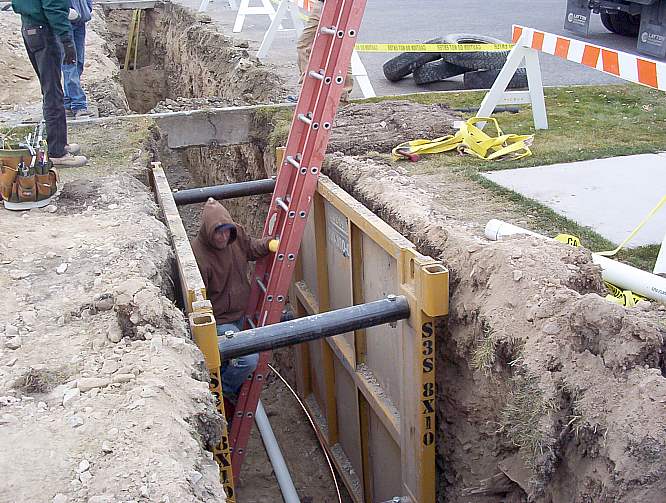
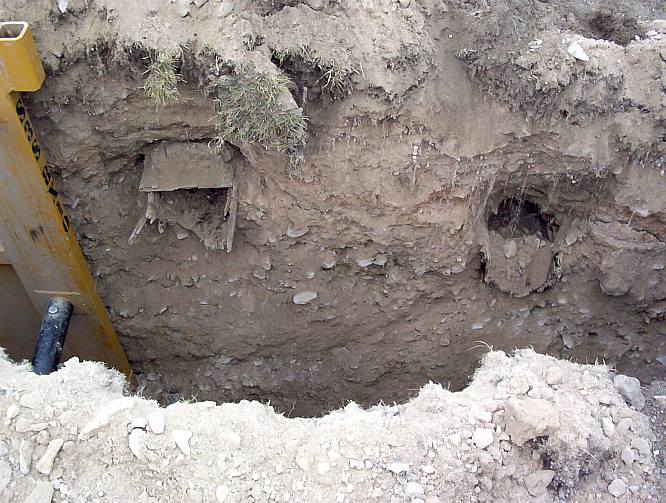
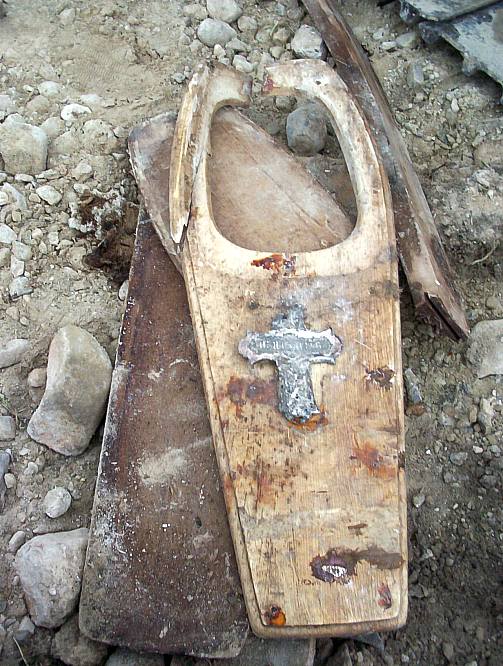
A child's coffin
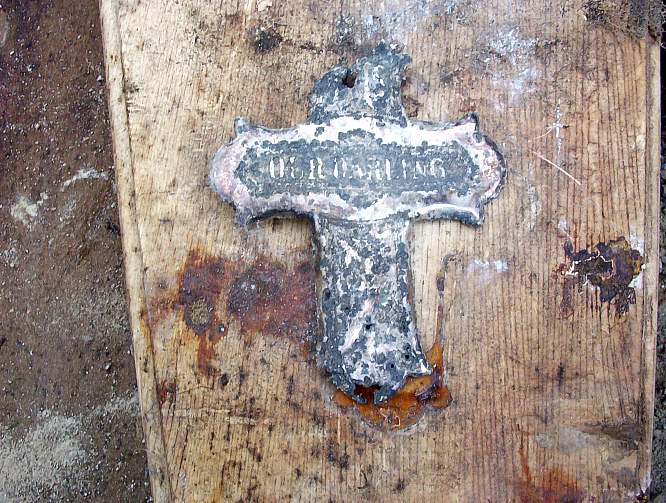
"Our Darling"
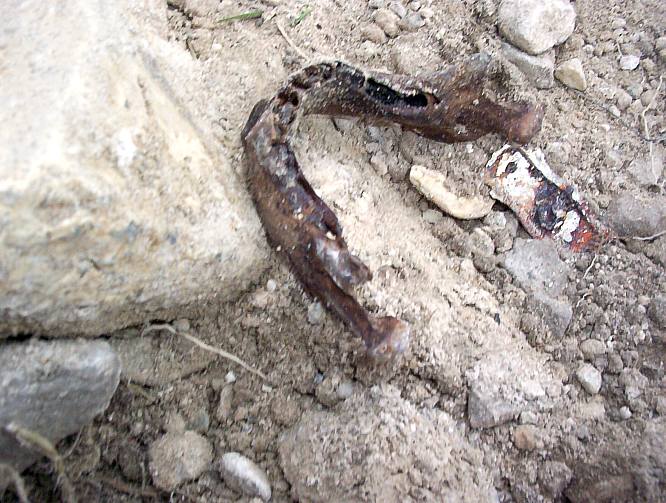
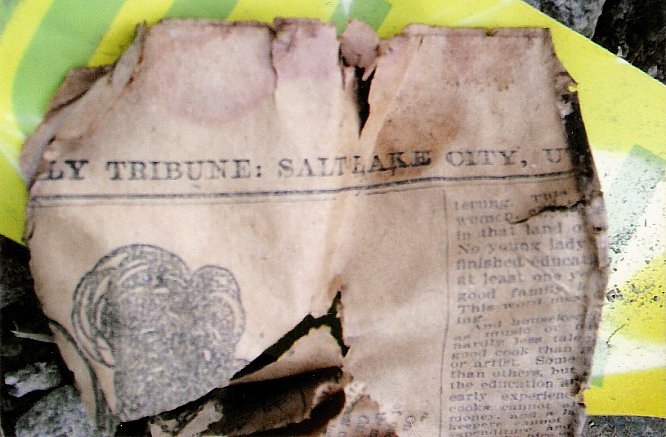
|
In one shattered
coffin was found a copy of the November 7, 1894 Salt Lake City,
Utah Daily Tribune. It is thought that it was placed
in the coffin as a means of dating and identifying the burial.
It was in remarkable condition after spending 110 years below
ground. Efforts were made by local historian Charleen Spalding
to obtain the paper from the individual who found it, in hopes
of conserving it, but she was unsuccessful.
A story
has recently come to light that a the skull of a man was taken
from the site by a worker during the exhumations, but was later
-- under official pressure -- reburied at Resurrection Cemetery.
1,600 bodies
remain buried under Robinson Park. If
anyone has photographs of the cemetery as it once was, please
contact me.
THANKS
TO CHARLEEN SPALDING and SISTER DOLORES BRINKEL, SCL, ARCHIVIST
OF THE DIOCESE
OF HELENA , FOR THEIR GREAT ASSISTANCE IN COMPILING THIS
SECTION.
|
|
THREE
STONES FROM THE CATHOLIC CEMETERY APPEAR IN THE BENTON AVENUE
CEMETERY
THANKS
TO CHARLEEN SPALDING
|
| The
earthly remains of Patrick Duffy, William W. Martin and John M.
Sweeney still rest beneath Robinson Park, but their tombstones
have turned up in the Benton Avenue Cemetery, a mile and a half
distant. Helena historian Charleen Spalding believes the stones
were found somewhere by a well-meaning person after the Catholic
Cemetery was razed, and were brought to the Benton Avenue Cemetery.
Note that one of the lost stones is that of the builder of
the first Catholic Church in Helena. CLICK
ON THE PHOTOS FOR LARGER IMAGES IN NEW WINDOWS |
|
|
|
|
William W. Martin, b 1842/02/05, d 1902/12/10, age 60,
body is in
Catholic Cemetery, tombstone is at side of the new shed in the
Benton Avenue Cemetery. He is listed in
the Sacred Hearts Interments, S. J. Sullivan, priest, Catholic
Cemetery,
block 8, lot 54 ½. |
John
M. Sweeney, b 1842/01/18, d 1887/05/10, age 45, body is
in Catholic Cemetery.A contractor and builder, he was with the
T. C. Power Co. from 1868, and died in Helena May 10 1887. He
erected the first Catholic church in Helena in 1866.
This surviving
remnant of his headstone stone reads, in part: “A pioneer
of Montana, distinguished for his unanswering integrity in every
public and private trust: A wise and prudent legislator: A generous
giver to the poor, and a devout Christian: The memory of the
just is blessed.”
There is a record of this burial
in the Sacred Hearts Interments. Stone is located in Section
B, Row 1.
|
Duffy,
Patrick, b 1863, d 1896/11/18, age 33, body is in Catholic
Cemetery. The stone is just inside the Benton Avenue gate on the
left in line with row A01. Tombstone was previously down, but
reset in 2006 |
PHOTOS OF
ROBINSON PARK - 2007
COURTESY
OF DEREK EVERS
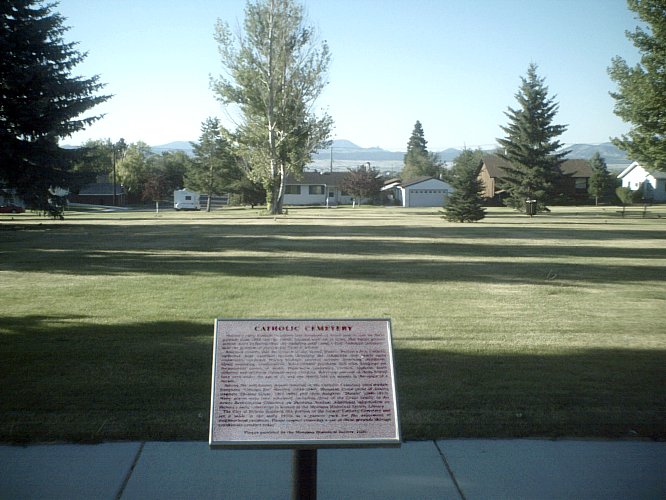
Looking north...

...looking south.
In Pace Requiscat

|

